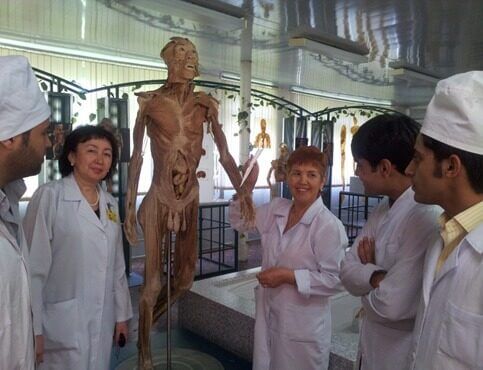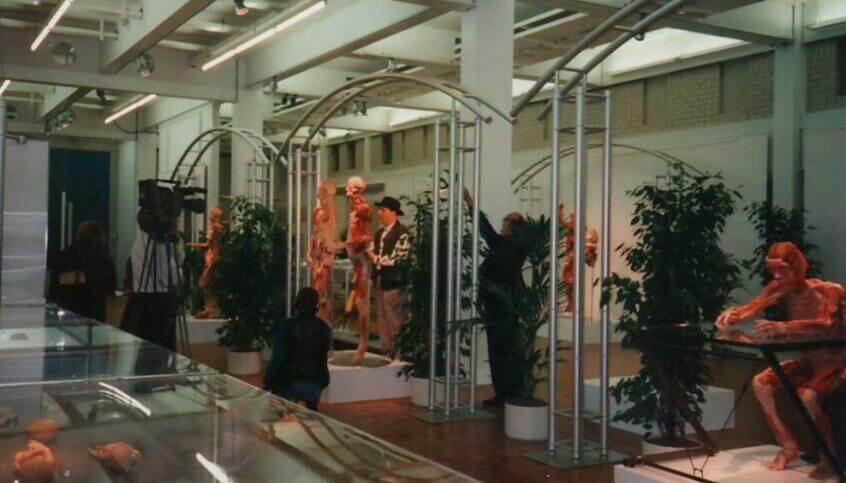
- Academic degree:
- Candidate of Medicine
- Academic title:
- Assosiate Professor
- Position:
- Responsible for the Museum

- Position:
- Plastination Museum Specialis
KSMА Plastination Museum
The plastination method was developed in 1977 by Professor Gunther von Hagens (Germany). The method of plastination is patented in many countries of the world (USA, Germany, China, etc.). The novelty of the innovative method of plastination is to replace the tissue fluid in the dead body with special sterilizing compounds and resins. This prevents the process of rotting and the organic body becomes synthetically strong and plastic, which determines the durability of anatomical preparations (shelf life up to 500 years). Preparations preserved by the method of plastination have all the properties of the object of the human body with complete preservation of the structure of the organs. They can be stored freely at room temperature and normal pressure, without losing their visual properties. In addition, the substances used in the plastination process lead to simultaneous sterilization of drugs.

The organizer of the KSMU Plastination Museum is the rector of KSMU prof. Akylbekov I. K., assoc. Abaeva T. S., prof. Gabitov V. Kh. The Museum of Plastination of KSMU was opened on May 23, 1998. Unique is the fact that the Museum of Plasticization exists only in 2 countries of the world: in Germany (Heidelberg), and in Kyrgyzstan (Bishkek). Currently, the funds of the Museum of Plasticity have more than 2000 exhibits that cover all sections of the course of normal and topographic anatomy.
Preparations preserved by the method of plastination have all the properties of a natural object of the human body, with complete preservation of the morphology of the organs. They can be stored freely at room temperature and normal pressure, without losing their visual properties. In addition, the substances used in the plastination process lead to relative sterilization of the preparations.

In the Anatomical Institute of the University of Heidelberg, a museum of plastinated preparations has been created, which are very popular with residents of Germany and tourists visiting this country. The exhibitions were held in Japan with great success (1997-1998). It was visited by more than one million people in Tokyo and Osaka, as well as in many European cities.
Museum of Plastination in Germany.
Since 1996, under the guidance of Professor Gunther von Hagens of the Heidelberg University in Germany, the staff of the Department of Topographic Anatomy and Operative Surgery of the Kyrgyz State Medical Academy have mastered the unique technology of deep embalming plastination.
The Department of Anatomy and Topographic Anatomy in practical classes used to be engaged only on formalized preparations and on whole bodies. Students and teachers had to breathe the smell of formalin and work with cadaveric poison. Only the students themselves can tell about how many unpleasant minutes they spent studying anatomy on such drugs. Many talented teachers and students leave for other jobs and other universities due to allergic reactions resulting from contact with this chemical.
But in 1996, a miracle happened at the Department of Topographic Anatomy and Operative Surgery. The unique technology of deep embalming plastination-specialists of the Department of Topographic Anatomy and Operative Surgery of the KSMU have mastered with the help of scientists from the Institute of Plastination of the ancient Heidelberg University, all employees of the department have passed a 3-month specialization in Germany 3 - 4 times.